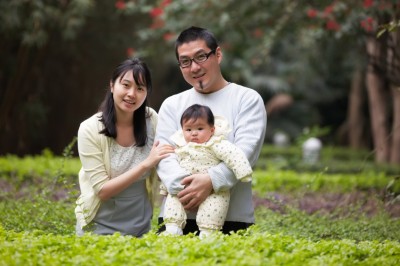 “We only wanted one kid anyway.”Vice President Joe Biden put foot firmly in mouth last week when, during an unscripted question-and-answer session with Chinese students, he said he understood and didn’t “second-guess” China’s one-child policy. Republicans pounced on the gaffe, Biden’s spokesperson clarified, and the whole pointless episode generated a lot of heat and no light, as I wrote yesterday.
“We only wanted one kid anyway.”Vice President Joe Biden put foot firmly in mouth last week when, during an unscripted question-and-answer session with Chinese students, he said he understood and didn’t “second-guess” China’s one-child policy. Republicans pounced on the gaffe, Biden’s spokesperson clarified, and the whole pointless episode generated a lot of heat and no light, as I wrote yesterday.
But as long as China’s one-child policy is in the headlines, let’s set a few things straight. First, something we should all be able to agree on: the policy, which has led to coerced sterilizations, forced abortions, and infanticide, is terrible and should end.
Beyond that, there are a lot of misunderstandings. Let’s debunk them.
Myth No. 1: Liberals support China’s one-child policy.
Most Democrats are even less likely than Republicans to talk about population, and if they ever dare to, it’s certainly not to endorse any coercive programs, but to laud the wide-ranging benefits of educating girls, empowering women, and making contraception and reproductive health care available to all women around the world. Al Gore did just that earlier this summer (and still the right-wingers went nuts, erroneously accusing him of pushing “population control”).
The Obama administration expressly criticized China’s policy in a 2010 State Department report [PDF], saying that one of China’s “principal human rights problems” is its “coercive birth limitation policy, which in some cases resulted in forced abortion or forced sterilization.” The report details specific instances of coersion and other heavy-handed tactics used while enforcing the policy.
Progressives and liberals to the left of the Obama admin certainly aren’t piping up in favor of China’s strategy either.
Myth No. 2: Environmentalists and population activists support China’s one-child policy.
Most environmental groups don’t want to touch population with a 10-foot pole, and certainly would never condone China’s approach. The few green groups that do bring up the issue of population growth — like the Sierra Club and Center for Biological Diversity — call for women’s rights and voluntary family planning, not government mandates.
Population groups in the U.S., by and large, don’t endorse China’s policy either. Ever since the 1994 U.N. population and development conference in Cairo, the population movement has focused on women’s rights and reproductive health broadly and fought against any coercive measures. Some groups and activists did support China’s one-child policy back in the day, but many population groups now have new leaders and they’re having none of that.
Sure, you can still find a few holdouts — misanthropic yurt dwellers and clueless folks who haven’t followed the data in recent decades. But those who know anything about current population trends know that a number of countries have reached lower fertility rates than China without human-rights violations. Which brings us to …
Myth No. 3: China’s one-child policy has been singularly effective at bringing down birthrates.
China’s fertility rate has fallen significantly since 1979, when the one-child policy was implemented — from 2.75 children per woman on average to 1.5. But fertility rates have fallen even further in other Asian countries where force and coercion have not been employed in recent years, including Japan (1.4 children per woman), South Korea (1.2), Hong Kong (1.1), and Taiwan (0.9). There’s a complicated mix of drivers behind this trend, as The Economist touches on in a recent cover story, including better education and economic opportunity for women, a shift toward marrying at older ages, and women’s reluctance to try to juggle it all in sexist societies that still burden them with most of the responsibilities for homemaking and childrearing. Even in China, many demographers say, most couples only want one child anyway.
All in all, according to the CIA, there are 41 countries with fertility rates lower than China’s — plenty of other places to look to if you’re seeking insights on slowing population growth.
Myth No. 4: China’s one-child policy restricts all Chinese couples to one child.
Note, above, that China’s fertility rate is 1.5 children per woman, not 1.0, which is roughly what you might expect in a country that really only permits one child per couple. In reality, the one-child rule applies mainly to urban couples; there are more than 20 exceptions to the rule, including for rural families, ethnic minorities, and couples in which both the wife and husband are only children themselves.
Myth No. 5: China’s one-child policy is responsible for the country’s severe gender imbalance.
In the wake of Biden’s gaffe, Fox News talking heads and others have alleged that China’s one-child policy has caused the country’s skewed gender ratio. Under normal circumstances, about 105 boys are born for every 100 girls (nature’s way of making up for the fact that more boys than girls tend to die before reaching adulthood). But in China today, there are 121 boys born for every 100 girls. This is largely the result of female fetuses being aborted by parents who want sons.
The one-child policy has likely exacerbated this trend, but it’s not wholly responsible for it. We know this because the trend is in evidence throughout Asia and other parts of the world. In Vietnam and India, the ratio is 112-to-100, and worse in the northern Indian states of Punjab and Haryana. The problem is also rampant in the Caucasus countries; in Georgia the ratio is 118-to-100, and in Armenia it’s 120-to-100. There are even skewed ratios in some Asian-American populations in the U.S.
A deficit of women leads to myriad problems, as Mara Hvistendahl lays out in her recent book Unnatural Selection: Choosing Boys Over Girls, And the Consequences of a World Full of Men. But the phenomenon has a number of different causes, historical and current — gender inequality being an obvious one — and can’t be blamed on one country’s population policy.
Myth No. 6: China’s one-child policy is unsustainable from an economic standpoint.
This sprang right from Biden’s lips
— that an aging population like China’s, with fewer workers to support more retirees, is “not sustainable.” He’s right that our current economic and social systems aren’t set up to cope with aging societies, but we’re going to have to develop new economic and social systems, because populations around the developed world are growing older, and that’s likely to continue. It’s a good problem to have, in many ways — it means people are living longer and most women aren’t having more children than they desire. We shouldn’t want people to die earlier, and we shouldn’t want women to have more kids than they’re inclined to just so we can prop up ill-designed pension schemes.
What’s actually unsustainable is endless growth — of our population and our incredibly wasteful economic system — on a planet with finite resources, serious environmental problems, and runaway climate change. Adapting to an older populace and uncertain future won’t be easy, but we don’t have a choice.
The good news is that women around the world consistently choose to have smaller families when they have education, autonomy, opportunities, and access to good reproductive health care, including contraception. If we stamp out coercion and ramp up empowerment, we can make a lot of progress toward a sustainable future.




